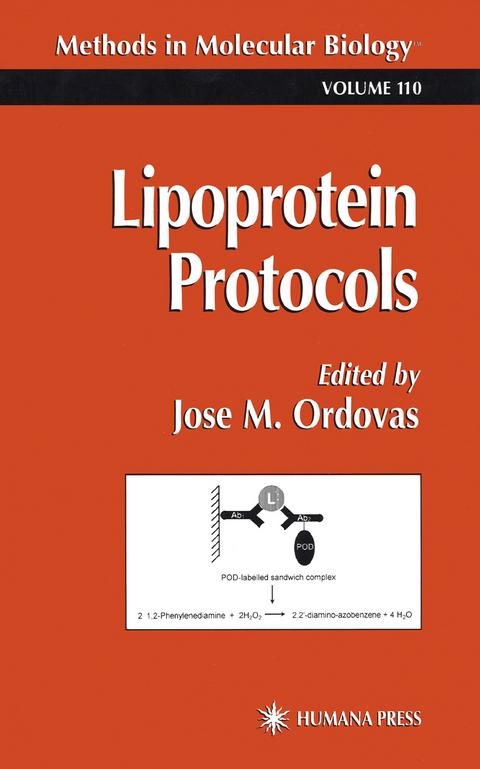
Lipoprotein Protocols
Humana Press Inc. (Verlag)
978-0-89603-420-4 (ISBN)
The development of new methodologies has played a key role in the advancement of all areas of research. Specifically, the initial advances in our understanding of lipoprotein structure and metabolism were made possible by the development of ultracentrifugation and electrophoretic techniques. More recently, the advent of molecular biological techniques opened possibilities that were unthinkable just a few decades ago. The use of the analytical ult- centrifuge to study plasma lipoproteins began in the 1940s with the work of Mutzenbecher, McFarlene, Pedersen, Gofman, Lindgren, and Elliot. Another crucial step, during the 1950s, was the development of this tool as a prepa- tive technique by Havel, Eder, and Bragdon, among others. This technolo- cal progress allowed investigators to "dig" deeper into the structure of these complex macromolecules made of lipids and proteins, and permitted inves- gators to continue unraveling the physical and chemical characteristics of the proteins associated with lipoprotein particles (apolipoproteins) and the enzymes involved in their processing.
This information led to both a better understanding of the biological functions of the lipoprotein fractions and their constituents, and creation of a more comprehensive overall scheme for plasma lipoprotein metabolism. Several gaps in this puzzle were filled through the work of Goldstein and Brown, who elucidated the structure and role of the low-density lipoprotein - ceptor. This was the first identified among a profusion of receptors that are key for the cellular catabolism of these particles.
DNA- and RNA-Based Methodolog.- PCR Methodology Applied to Genetic Studies of Lipoprotein Metabolism and Atherosclerosis.- Separation of Small-Size DNA Fragments Using Agarose Gel Electrophoresis.- Quantification of mRNA by Polymerase Chain Reaction (PCR) Using an Internal Standard and a Nonradioactive Detection Method.- Generation of Transgenic Mice.- Preparation of Knockout Mice.- Protein-Based Methodology.- Fast Ultracentrifugation Methods for the Separation of Plasma Lipoproteins.- Preparative Isolation of Plasma Lipoproteins Using Fast Protein Liquid Chromatography (FPLC).- Separation of Apolipoproteins by Polyacrylamide Gel Electrophoresis.- Isolation and Purification of Serum Lipoprotein (a) Using Lectin Affinity.- Electrophoretic Separation of LDL and HDL Subclasses.- Measurement of Lipoprotein Particles.- Methodological Approaches for Assessing Lipid and Protein Oxidation and Modification in Plasma and Isolated Lipoproteins.- Separation and Quantitation of Phospholipid Classes by HPLC.- Assays of Lecithin Cholesterol Acyltransferase (LCAT).- Determination of the Mass Concentration and the Activity of the Plasma Cholesteryl Ester Transfer Protein (CETP).- In Vitro Measurement of Lipoprotein and Hepatic Lipases.- Cellular Assays for Lipoprotein Receptors.- Measurements of Proteoglycan—Lipoprotein Interaction by Gel Mobility Shift Assay.
| Erscheint lt. Verlag | 25.8.1998 |
|---|---|
| Reihe/Serie | Methods in Molecular Biology ; 110 |
| Zusatzinfo | XI, 284 p. |
| Verlagsort | Totowa, NJ |
| Sprache | englisch |
| Maße | 155 x 235 mm |
| Themenwelt | Naturwissenschaften ► Biologie ► Biochemie |
| Naturwissenschaften ► Biologie ► Mikrobiologie / Immunologie | |
| Naturwissenschaften ► Biologie ► Zellbiologie | |
| ISBN-10 | 0-89603-420-8 / 0896034208 |
| ISBN-13 | 978-0-89603-420-4 / 9780896034204 |
| Zustand | Neuware |
| Haben Sie eine Frage zum Produkt? |
aus dem Bereich


